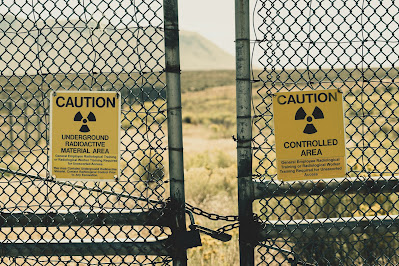Featured
Human-level AI in Creative Fields: Exploring Art, Music, and Literature
Human-level AI in Creative Fields: Exploring Art, Music, and Literature
Artificial intelligence (AI) has made significant advancements in recent years, raising questions about its impact on human creativity in various fields, including art, music, and literature. While some may fear that AI-generated works could replace human creativity, others see AI as a powerful tool that expands artistic possibilities and enhances human creativity[3]. Let's delve into the topic and explore the implications of human-level AI in creative fields.
AI in Art
AI has emerged as a collaborator in artistic creation, stretching the boundaries of creativity and disrupting traditional art-making processes[5]. Artists are using AI to generate unique artworks, collaborate with autonomous robots, and develop novel concepts and visuals[5]. AI systems can learn to compose original music in the style of famous musicians or generate paintings reminiscent of renowned artists[5]. This collaboration between artists and AI allows for the exploration of new artistic expressions and the creation of never-before-seen works.
AI image generators have gained attention for their ability to produce stunning, realistic, and detailed images[1]. Users can input ideas or phrases, and AI algorithms transform them into visually captivating images[1]. This democratizes the creation of art, as individuals without professional artistic skills can now generate visually impressive artwork[1]. The sheer volume of AI-generated images being created daily is staggering, with millions of images being co-created by humans and AI[1].
AI in Music
AI's impact on the music industry is also significant. AI algorithms can analyze vast amounts of musical data, such as past performances and common influences between musicians, to suggest new musical ideas and compositions[6]. This can assist musicians in finding inspiration, exploring new genres, and pushing the boundaries of musical creativity[6]. AI can also generate original music in the style of specific artists or genres, expanding the range of musical possibilities[6].
AI in Literature
AI's potential in literature is equally intriguing. AI-powered tools can assist human writers by providing inspiration, generating ideas, or automating repetitive tasks[2]. For example, AI algorithms can analyze large amounts of text data to generate coherent and compelling narratives[2]. While AI-generated works of literature can supplement human creativity, there is also the possibility that they could substitute for human-created works[2]. The reception and acceptance of AI-generated literature by audiences will ultimately determine whether they are seen as true substitutes for human creativity[2].
The Intersection of AI and Human Creativity
Rather than replacing human creativity, AI serves as a powerful tool for expanding artistic possibilities[3]. AI can assist artists, musicians, and writers by providing new perspectives, generating ideas, and automating certain tasks, allowing humans to focus on the more nuanced aspects of their creative process[3]. The collaboration between humans and AI can lead to the emergence of novel artistic expressions and push the boundaries of creativity.
However, it is important to note that AI currently lacks certain human skills and qualities that contribute to creativity, such as collapsing moments in time, memory, thoughts, and emotions[4]. These uniquely human aspects of creativity cannot be replicated by AI algorithms[4]. Therefore, while AI can generate impressive outputs, it still falls short of capturing the full spectrum of human creativity.
Conclusion
Human-level AI has made significant strides in creative fields like art, music, and literature. AI-generated works can be visually stunning, musically captivating, and narratively compelling. However, AI should be seen as a tool that enhances human creativity rather than a replacement for it. The collaboration between humans and AI opens up new possibilities, expands artistic expressions, and challenges traditional creative processes. As AI continues to evolve, it will be fascinating to see how it further impacts and shapes the creative landscape.
Citations:
[1] https://www.wired.com/story/picture-limitless-creativity-ai-image-generators/
[2] https://renatosabbatini.medium.com/are-artificial-art-and-literature-the-end-of-human-criativity-fec3e779c252
[3] https://fintelics.medium.com/ai-and-art-exploring-the-intersection-of-creativity-and-technology-40405f9156ab
[4] https://www.theguardian.com/technology/2022/nov/12/when-ai-can-make-art-what-does-it-mean-for-creativity-dall-e-midjourney
[5] https://magazine.artland.com/ai-art/
[6] https://www.berklee.edu/berklee-now/news/what-does-new-ai-technology-mean-for-artists
Popular Posts

Why are Memories Forgotten?
- Get link
- X
- Other Apps

How is the Colour of a Lobster Determined?
- Get link
- X
- Other Apps

Can Sound Waves Solve Plastic Pollution?
- Get link
- X
- Other Apps

Can Animals Recognise Human Faces?
- Get link
- X
- Other Apps

Is the Earth Spinning Faster?
- Get link
- X
- Other Apps

Do plants sleep? The surprising science of sleep in the plant kingdom
- Get link
- X
- Other Apps

Can Bad Times Actually Improve Your Life? Surprising Benefits of Adversity
- Get link
- X
- Other Apps

Can Brain Implants Make You More Powerful?
- Get link
- X
- Other Apps

The Future and Potential of Nuclear Batteries
- Get link
- X
- Other Apps

Could Sun Blocking be a Strategy to Combat Global Warming?
- Get link
- X
- Other Apps
Popular Posts

Why are Memories Forgotten?
- Get link
- X
- Other Apps

How is the Colour of a Lobster Determined?
- Get link
- X
- Other Apps

Can Sound Waves Solve Plastic Pollution?
- Get link
- X
- Other Apps

Can Animals Recognise Human Faces?
- Get link
- X
- Other Apps

Comments
Post a Comment